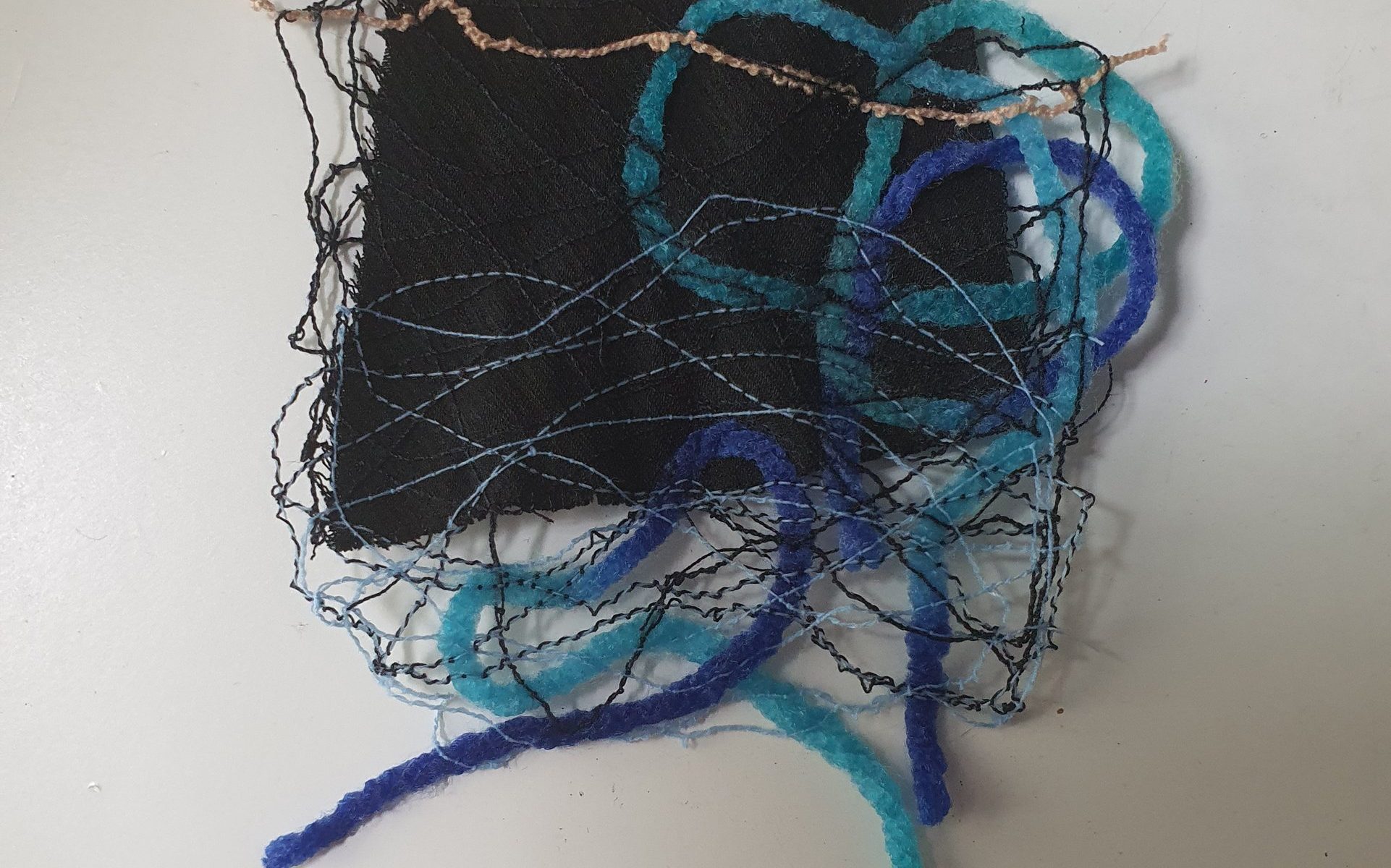Material List for Plastic Fusion:
- Plastic bags or plastics of any kind
- An Iron
- Wax Paper
Instructions for Plastic Fusion:
Step 1: Cut and arrange the plastic bags in the pattern that you want.
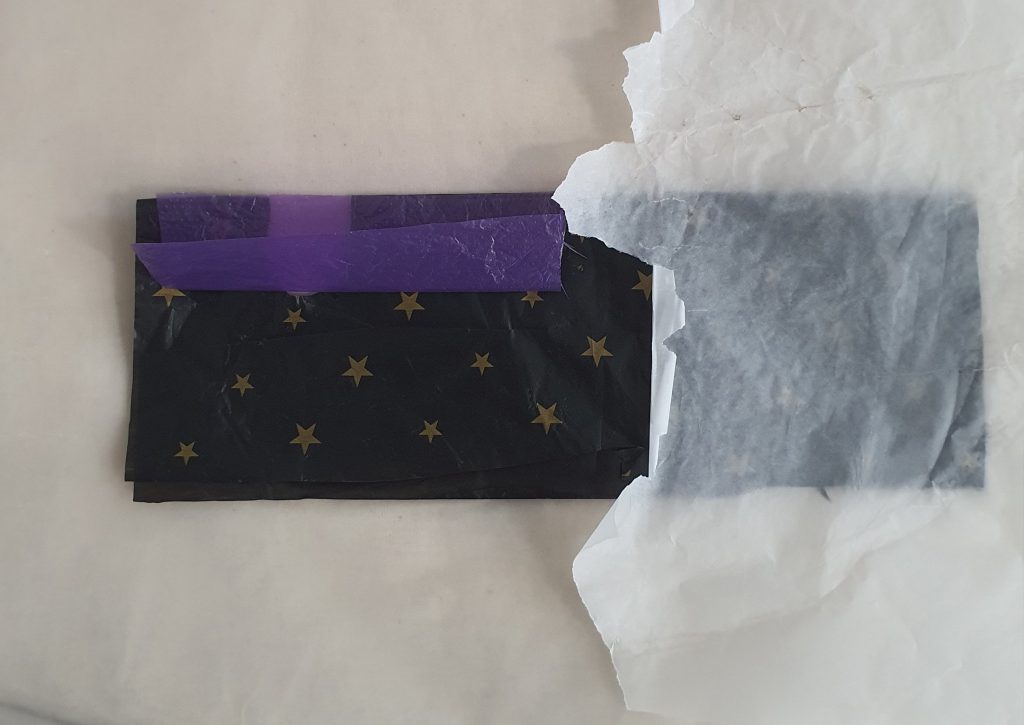
Step 2: Sandwich the plastics between wax paper and iron them to fuse. (The starting setting was the one with the highest heat)

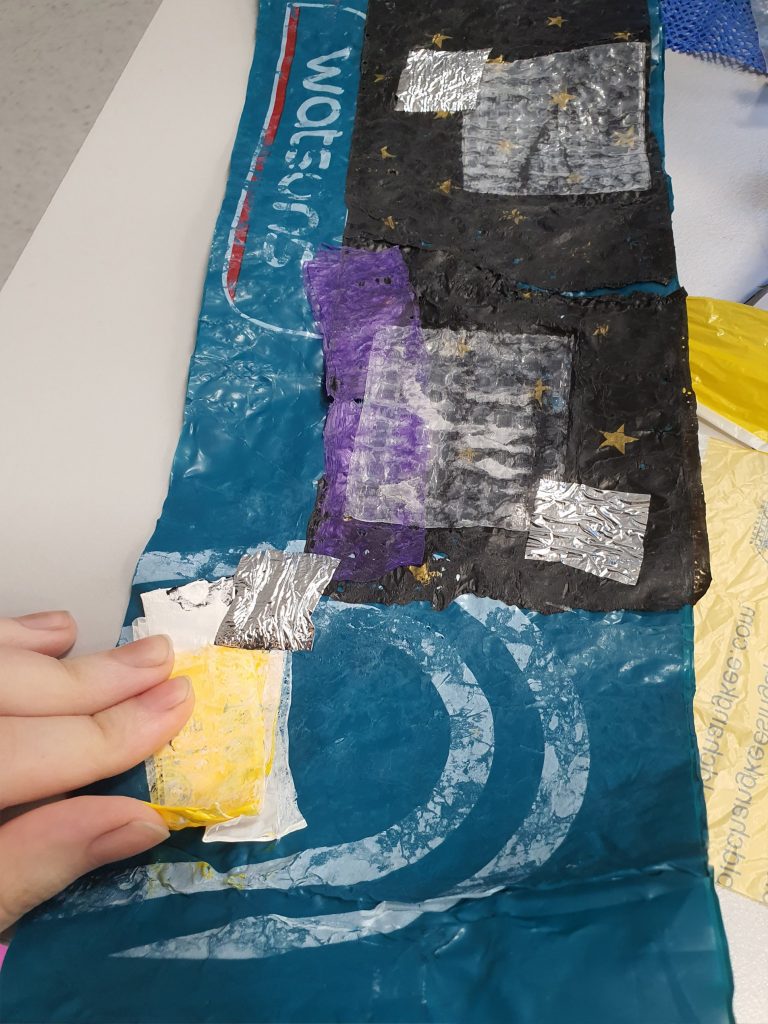
Reflection:
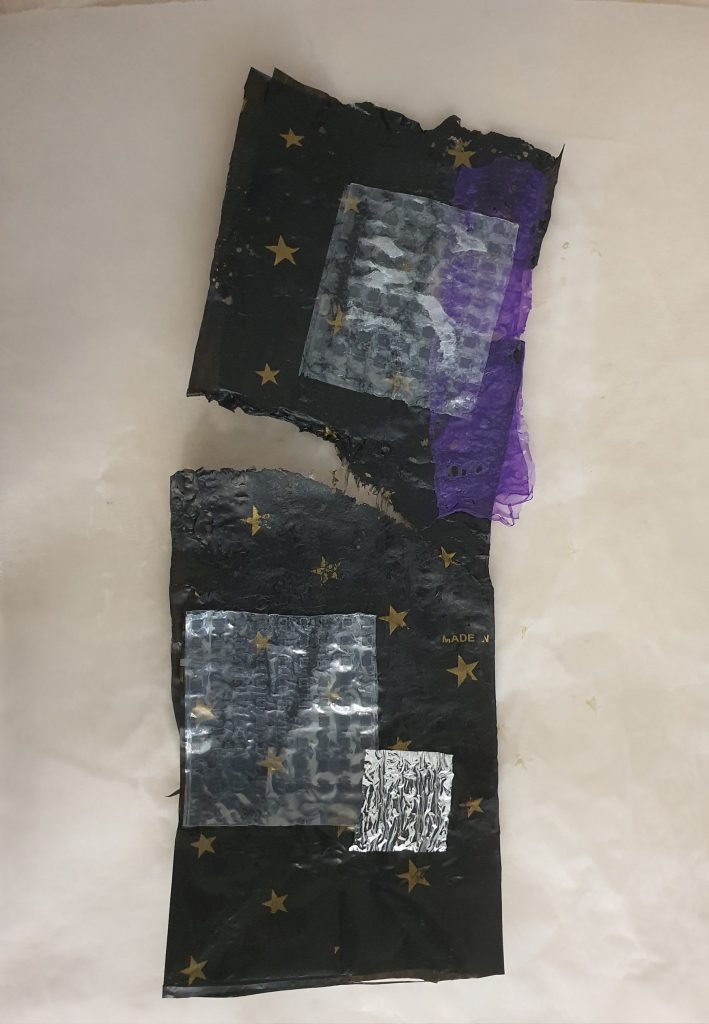
Thin plastics burns very easily, the kind from the markets or trash bag material. Layer them sufficiently or turn down the heat from the iron.
The designs on the plastics transferred to the wax paper. It could be because the heat was too high, but certain designs melted faster then the plastics and fused to the wax paper instead. On a side note, some of the plastics fused to the wax paper instead of with the other plastics. (It could be the type of wax paper used, but that is a hunch? )
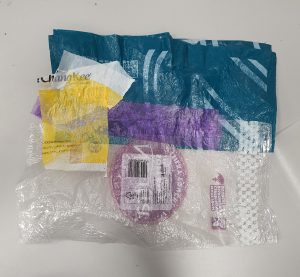
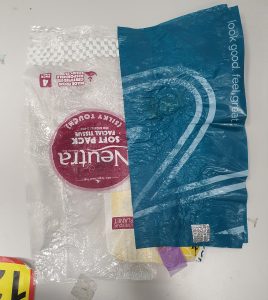
Transparent plastics are sticky. The take more heat to melt (or at least my transparent package did) but it refuses to fuse. Instead it feels slightly resistant to touch hence I describe it as sticky. It does create very beautiful ‘frosted glass’ texture though.

Sometimes the heat is not enough and it results in the plastics not fusing, hence a cute little hole for your finger to stick through, a very intentional design flaw XD.
Material List for Thread Fabric:
- Threads
- A sewing Machine
- Water Soluble Stabiliser
- Fabric and trimmings to add into the ‘fabric’.
- UV resistant acrylic spray
Instructions for Plastic Fusion:

Step 1: cut two identical pieces of water soluble stabiliser
Step 2: Sandwich threads, fabric trimmings or anything you want in between the two pieces of water soluble stabiliser.
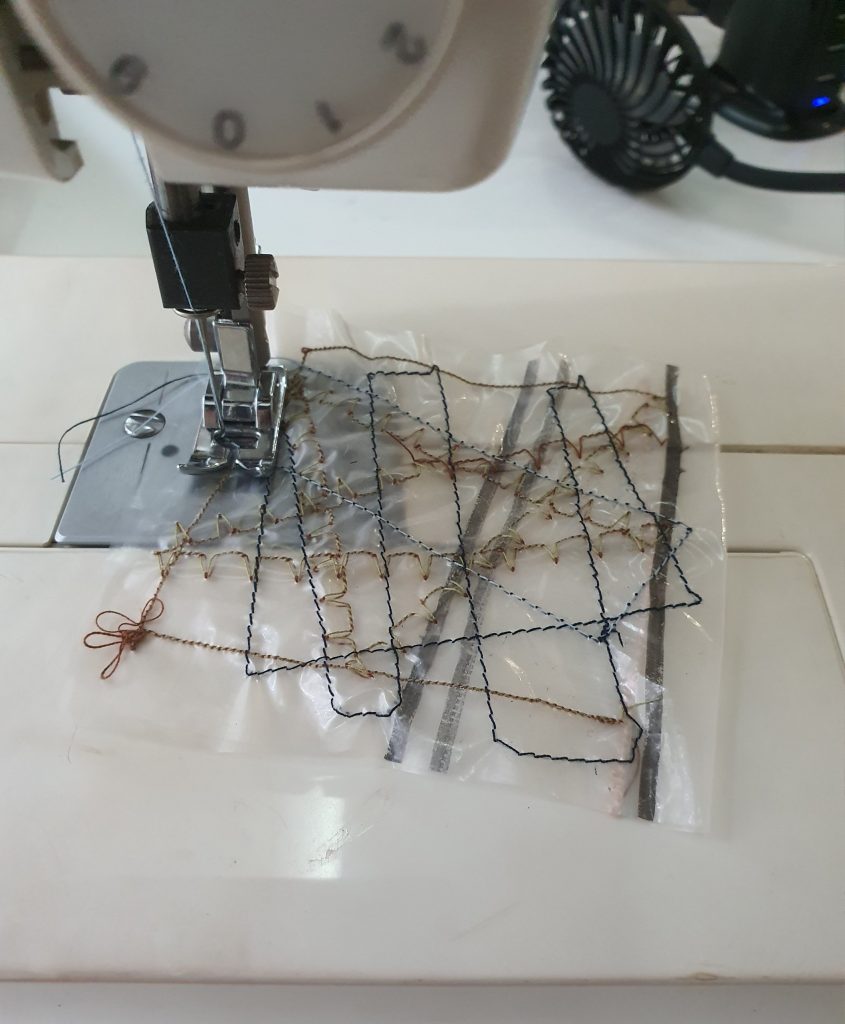
Step 3: Pin them in place and start sewing.
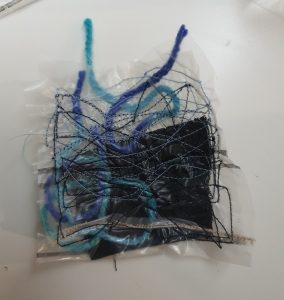
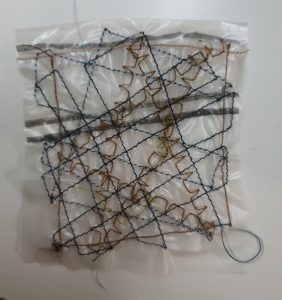
Step 4: Wash the water soluble material away.
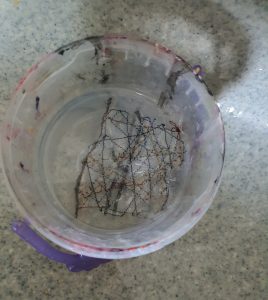
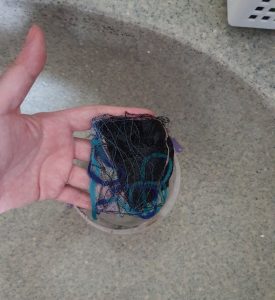

Step 5: Place the wet material over a surface shape that you want them to hold and leave to dry. (Optional)
Step 6: Spray a coat of UV resistant acrylic spray over it to stiffen the material and allow it to keep its shape. (Optional)
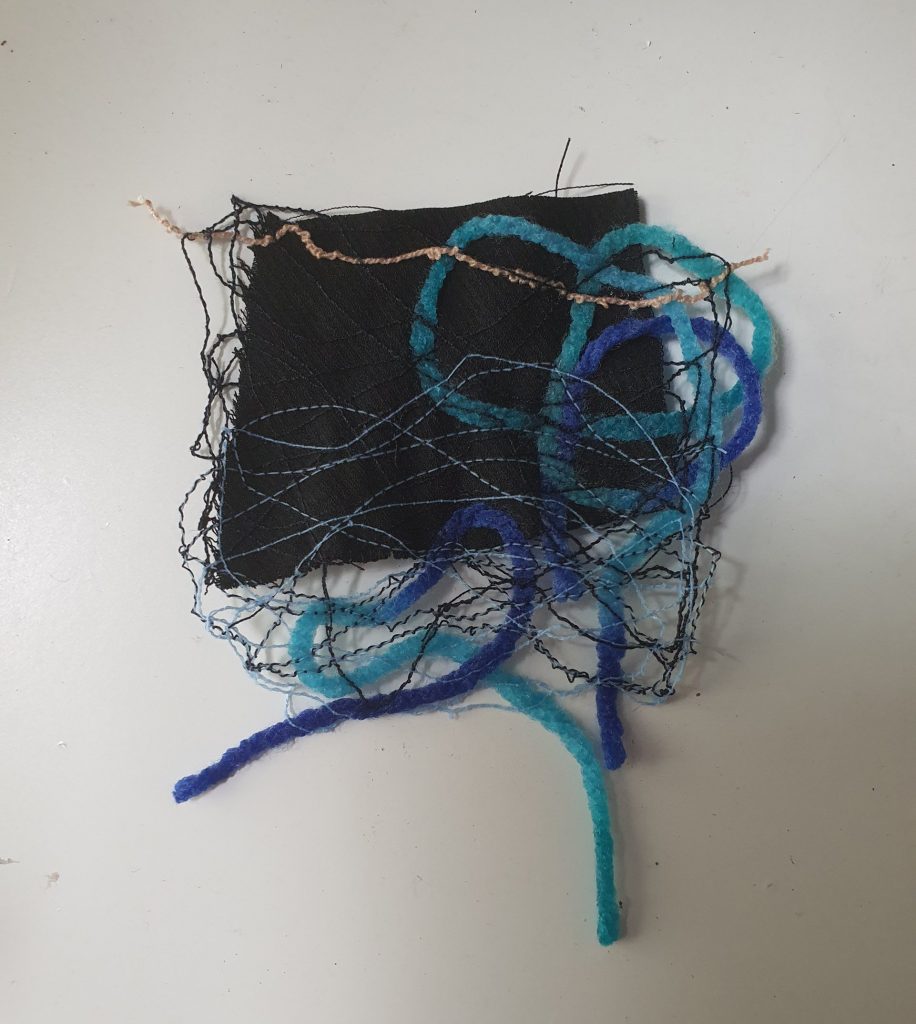
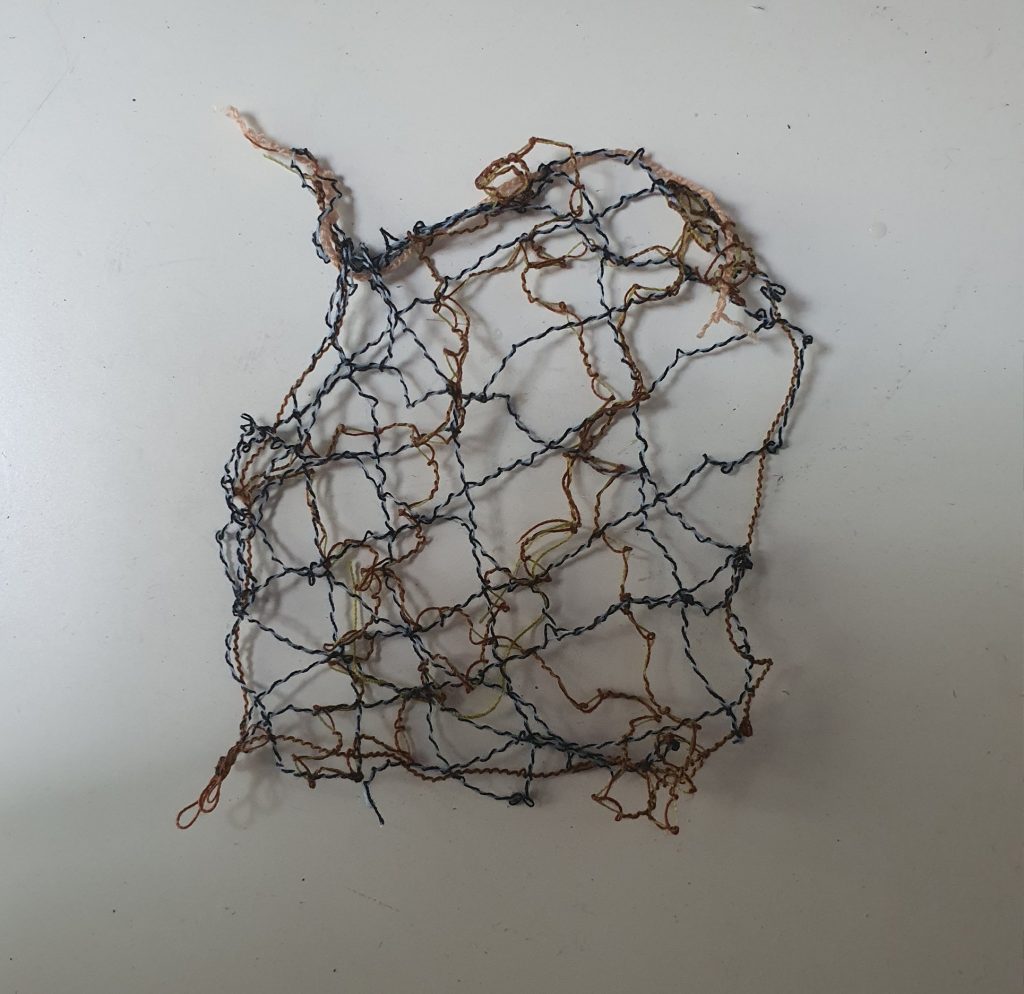
Reflection:
Upper and lower threads can be of different colours to create more interesting visual contrasts.
Make sure that the threads overlap, because that is the only thing holding the ‘fabric’ together when the water soluble stabiliser is washed away.
Sewing can be done with any patterns, lets have fun and explore together.
Be careful when washing the threads only fabric, as they feel a bit fragile, especially if you threads are a bit sparse like our trial. Do not squeeze them into a ball (I thought they were going to stick all together oAo).

